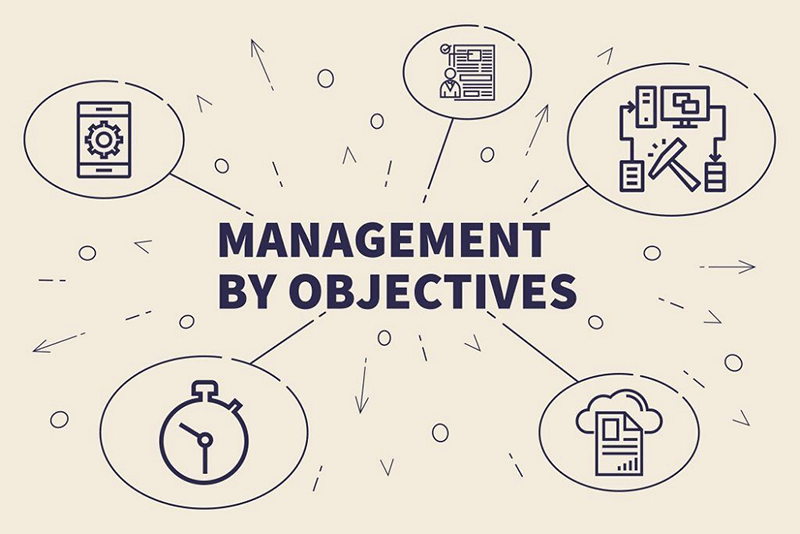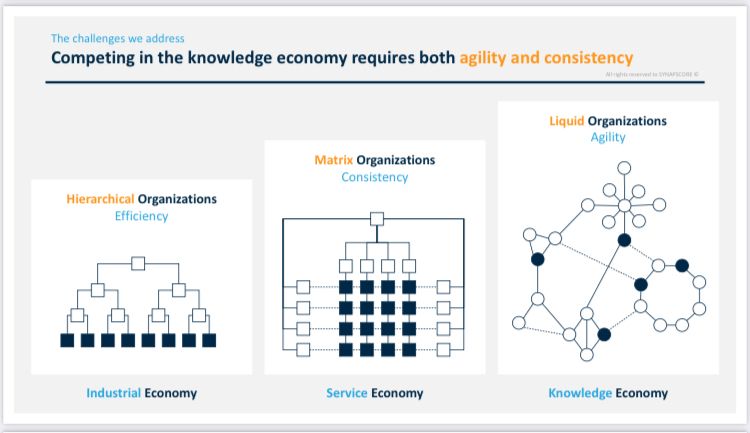
Our SynapsCore solution – Performance optimization and organizational agility
We have developed a revolutionary technology to optimize business agility and performance.
Our solution is used by thousands of people to choose, connect and manage their individual and collective goals.
Our mission is to offer them a simple and secure work space so that everyone can express their full potential.
Our solution integrates four management systems:
It serves first to connect strategic, tactical and operational objectives,
It is then used to manage projects and project portfolios,
it also serves to measure and optimize operational excellence,
it is used to identify and control risks our solution integrates all the functionalities to collaborate on a large scale with maximum efficiency.
Users launch challenges to identify opportunities, then use trays to sort and prioritize opportunities. It then transforms these priorities into individual and collective objectives.
Finally, they associate an action plan to each objective and use the platform to track the progress and impact of all their actions.
Our solution is used worldwide by dozens of companies of all sizes and in all sectors of the economy.
Real-time translation gives everyone the freedom to work in the language of their choice.
The SynapScore solution and the vision of its founder are recognized in France and abroad, in 2018 SynapScore entered the Top 5% of the early metric ranking of the 1200 most innovative European technologies. In 2022 Serge DAUTRIF received the award for the most innovative Souillot of the year in the collaborative platform industry
SynapScore technology
Let’s talk about the SynapScore technology, there are many collaborative tools but SynapScore is the only platform that integrates :
surveys,
digital workshops,
management by objectives,
project management,
task management,
community management
Our question engine asks your employees in their own language, analyzes their answers in real time and gives them the opportunity to compare their points of view. It also generates highly structured opportunity sheets to turn ideas into action.
Collaborative trays allow opportunities to be sorted according to their simplicity, their impact, their urgency.
The operational teams take ownership of the actions that need to be taken in the field, and the General Management can then focus on the more global opportunities.
Once the priorities are sorted the users transform them into individual and collective goals, the goals are then connected vertically and horizontally. Vertical connections link the goals of management with those of the field; horizontal connections break down silos and link the goals of different departments
Our case studies
I now propose to look at four client cases:
TECHNIP used our solution to reduce work-related accidents. It mobilized all of its employees to identify situations and behaviors at risk. 70,000 opportunities were identified, sorted and transformed into objectives and action plans. This approach, which was carried out in less than a month and involved more than 20,000 people, led to a 30% reduction in work-related accidents.
Elkem Silicones uses the SynapScore platform to deploy and monitor the company’s strategic objectives. Real-time translation enables teams to collaborate globally using SynapsCore’s unique data model. Teams can connect their goals and projects by business unit, by function and by country.
The Air Liquide Group used the SynapScore platform to audit its industrial management macro processes. Following this audit, all macro processes were rewritten and the new management system was deployed in 80 countries and 200 subsidiaries. The management of this program has been fully managed on the SynapScore platform
The EGIS group used the SynapScore platform to survey all its employees and ask them to identify time-consuming activities for which they did not see the added value. Each employee was then asked to propose solutions to reduce or eliminate these activities. The 20,000 opportunities thus identified and sorted out have enabled the group to improve its profitability by 2% in 12 months
The Methodology
I will finally detail the technical case in this example, the security director launched a global challenge by inviting 20,000 people to share their experience and ideas. In two weeks 70,000 opportunity cards were produced. A 90-minute workshop then mobilized 2,000 people to review and sort their cards. 3000 objectives were then deployed and accompanied by 15000 actions, 80% of these actions were carried out within three months of the workshop. They have reduced the frequency of work-related accidents by 30%.
Our platform integrates a library of challenges to optimize and accelerate the resolution of problems that are typically encountered by all major functional departments. These challenges can be easily adapted to the context and specific issues of each company
I hope that this presentation has allowed you to understand why and how to use our solution our team and our partners are of course at your disposal to answer your questions to make a demonstration and to accompany you if you wish to use our solution do not hesitate to contact us




